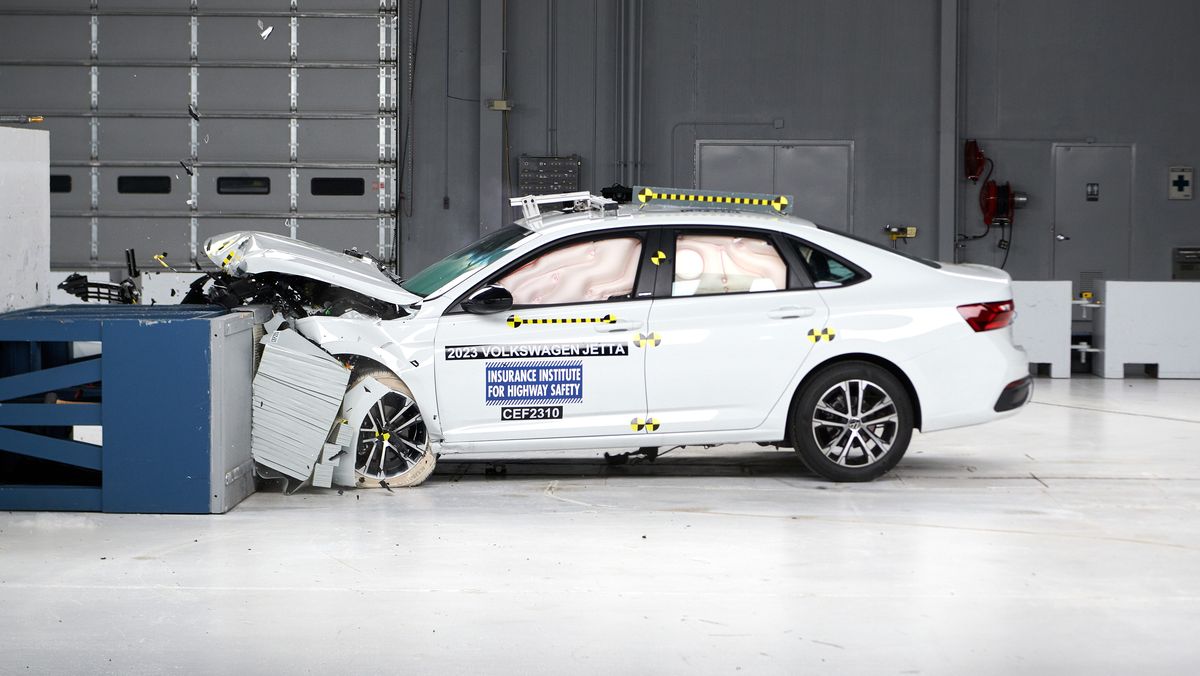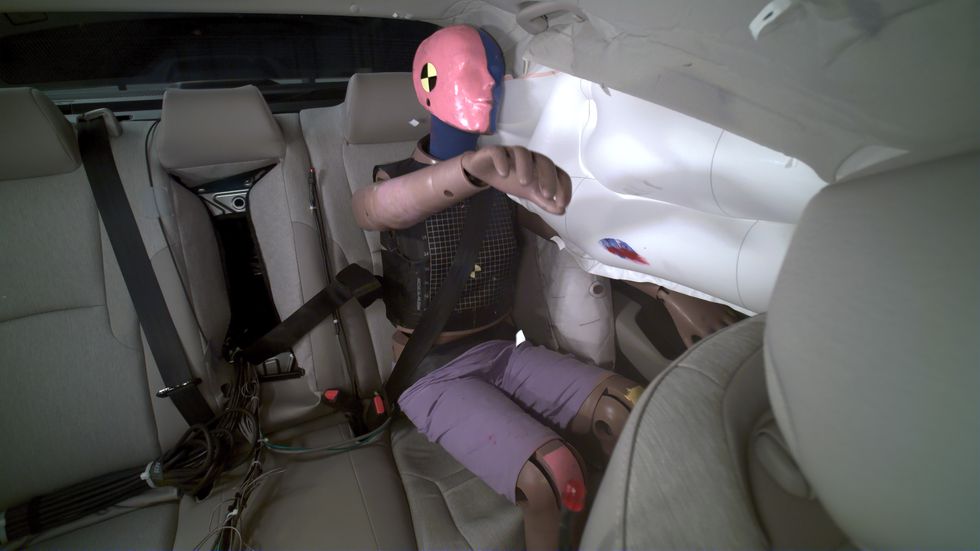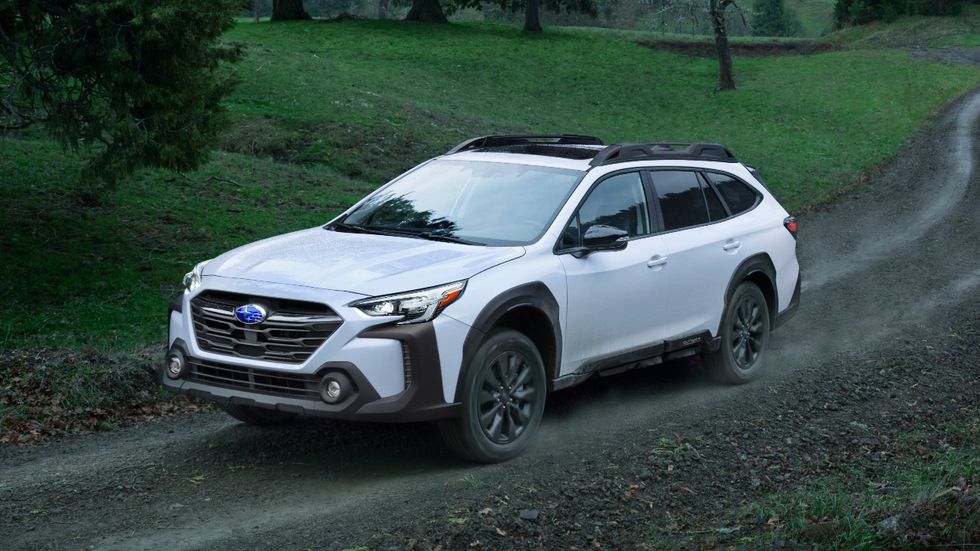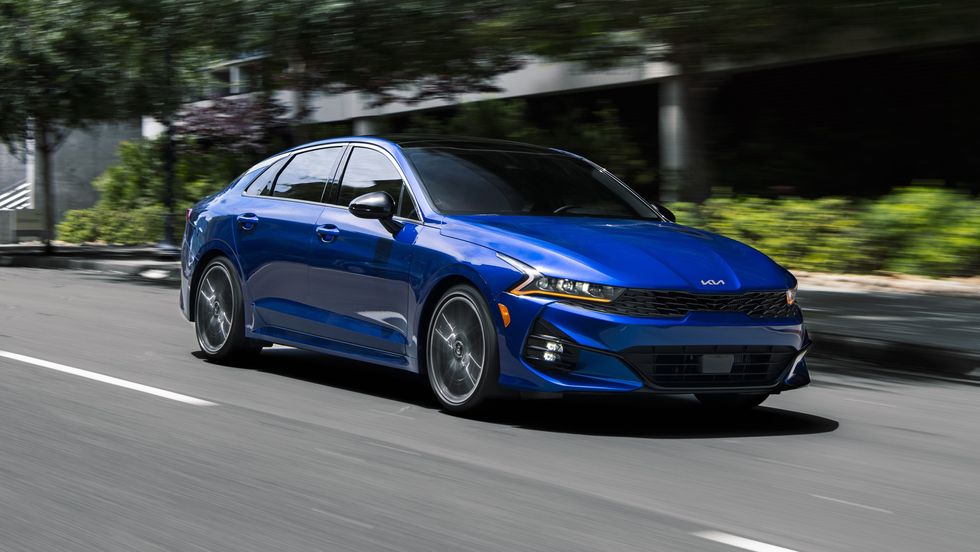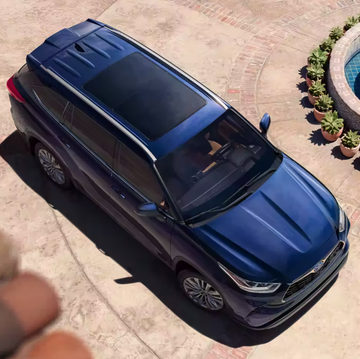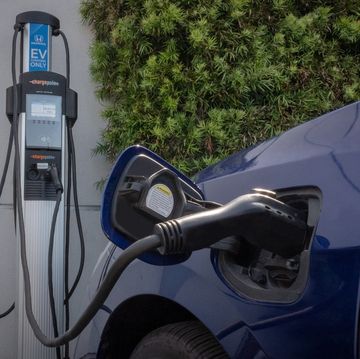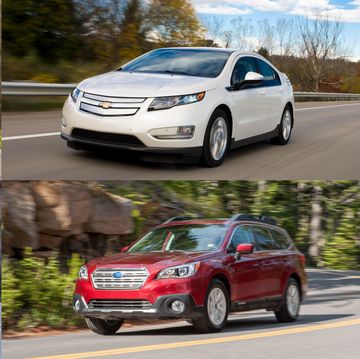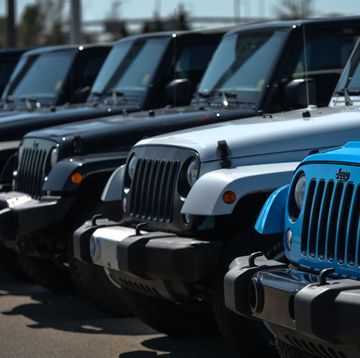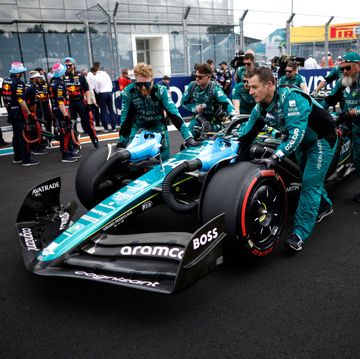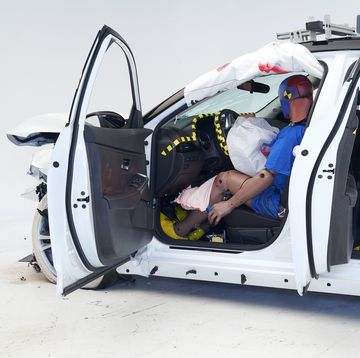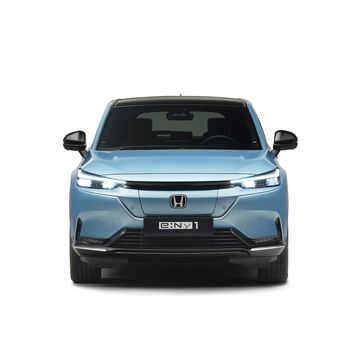- With SUVs growing and the curb weight of EVs rising, midsize sedans are still holding strong in terms of safety, as long as you're sitting in the front seat.
- However, if you or your child happen to be sitting in the back, testing from the Insurance Institute for Highway Safety shows a comparative lack of safety.
- Some 2023 models performed admirably while others struggled, though the institute says an industry-wide lack of advanced airbags in the rear is to blame.
Every year, the Insurance Institute for Highway Safety revamps its set of crash tests. From adding a few miles per hour to updating the height or weight of the impacting object, researchers and engineers at the institute push the envelope to see just how safe (or unsafe) modern cars are.
Sometimes these tests show results that indicate vehicle safety still has a ways to go. And recent IIHS testing shows that backseat passengers aren't as safe as they might think, even in SUVs and crossovers. Unsurprisingly, this problem is exacerbated when car sizes shrink, as exampled by its newest moderate overlap crash testing on midsize models.
Simulating a partial head-on collision at 40 mph, this updated crash test has wreaked havoc on modern standards for rear passenger safety. These testing revelations are mostly owed to the rear dummy's size, which closely resembles a small woman or 10- to 12-year-old child.
And a batch of 2023 model-year midsize sedans and station wagons struggled with the test, except for one model.
The 2023 Honda Accord provided stellar protection in the back seat, according to instrumented IIHS testing. In fact, the Accord performed so well that it received top safety marks for both front and rear occupants, with no heightened risk of injuries in either section.
Subaru's Outback was the runner-up in safety, receiving an overall rating of acceptable, which is a notch down from the best rating of good. Front seat passengers and rear seat passengers are very well protected in the Outback overall, though testing showed a tendency for rear passengers to submarine under the lap belt.
Similarly, the IIHS said the dummy actually impacted the rear window door trim in testing, as it managed to slip between the side curtain airbags. Even so, force measurements taken from the front and rear dummies didn't show any elevated injury risks in the Outback.
Continuing their multi-decade rivalry, Nissan's Altima and Toyota's Camry received marginal ratings, with good front seat safety and a variety of rear seat deficiencies. In both models, the rear dummy submarined beneath the lap belt while the shoulder belt deviated toward the dummy's neck.
Overall, the Altima fared a bit worse, presenting a moderate risk of head or neck injuries for the rear passenger. By comparison, the Camry only received negative notes as a result of increased chest injuries, independent of the submarining issue.
Rounding out the test were Volkswagen's Jetta, Hyundai's Sonata, and Kia's K5. All three midsize sedans received poor markings on the passenger safety front, though front seat safety remains good across the board. And the common thread between all three models was a high likelihood of injuries to the head or neck and chest as well as excessive belt forces.
Specifically, the Hyundai and Kia struggled with rear passenger submarining while the Jetta's rear dummy consistently came too close to the front seatback. Consistent seatbelt positioning was also an issue for the Hyundai and Kia, indicating that a shared seatbelt system could be to blame.
The takeaway from these results should not be that the rear seat has become more dangerous, the IIHS says. In fact, the advancements that allow some of the models tested to score well on front-seat safety help explain why backseat safety is lacking.
"The front seat has become safer because of improved airbags and advanced seatbelts that are rarely available in the back," the IIHS report reads. "Even with these developments, the back seat remains the safest place for young children, who can be injured by an inflating front airbag."
Does the growing size of modern cars bother you? If so, why? Please share your thoughts below.
A New York transplant hailing from the Pacific Northwest, Emmet White has a passion for anything that goes: cars, bicycles, planes, and motorcycles. After learning to ride at 17, Emmet worked in the motorcycle industry before joining Autoweek in 2022. The woes of alternate side parking have kept his fleet moderate, with a 2014 Volkswagen Jetta GLI and a 2003 Honda Nighthawk 750 street parked in his South Brooklyn community.
